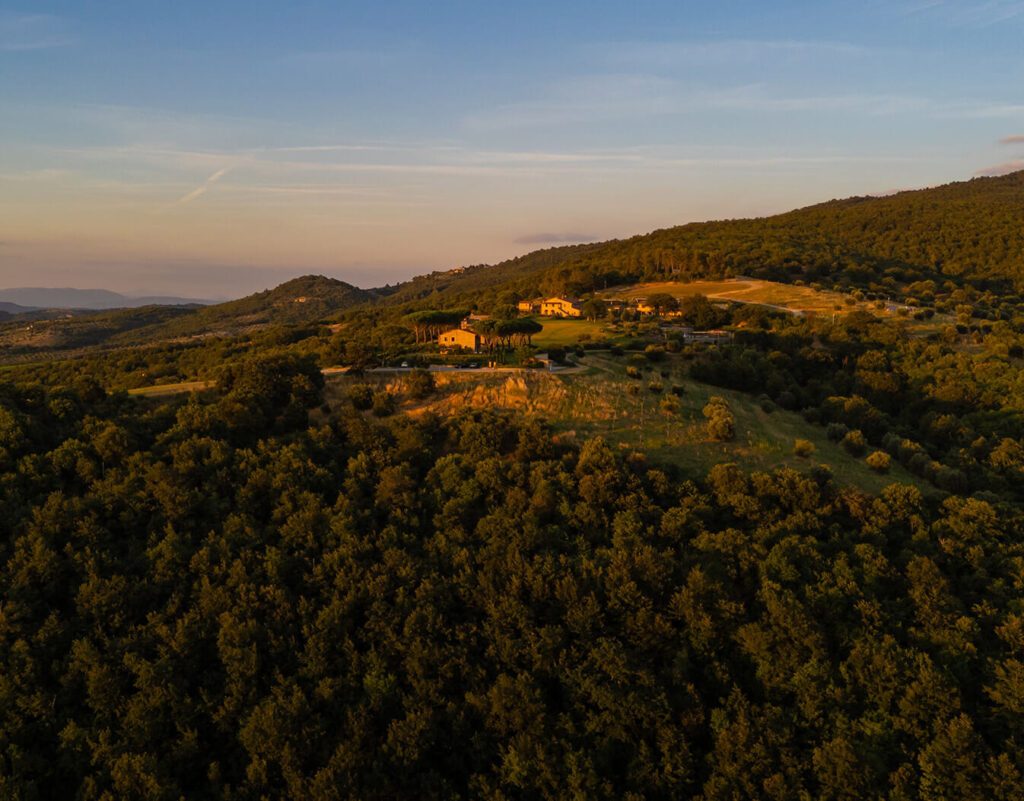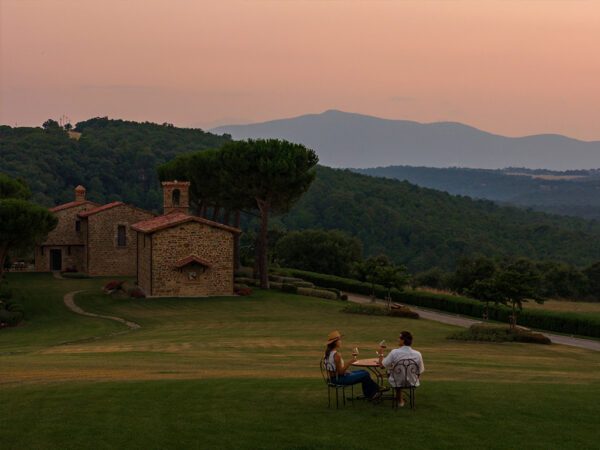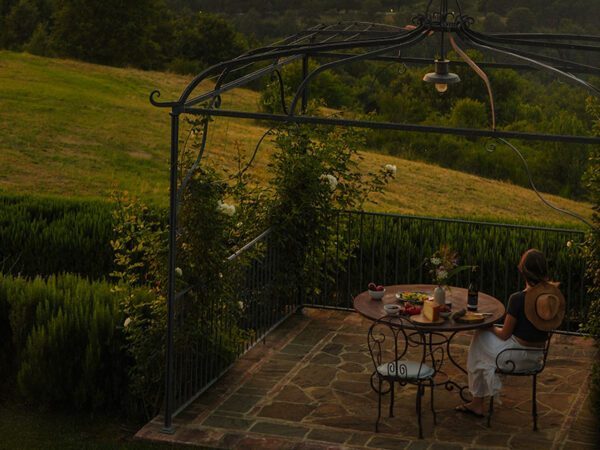About us
Human and Nature in Harmony
A family, a territory
The History of I Borghi dell’Eremo began in 2013 from the dream of the Galletti family. Their greatest
desire was to ensure that their children and grandchildren had the opportunity to cultivate, protect and enhance the land of their beloved region. “Let’s start again from our land” was the message that our CEO Paolo Galletti conveyed to us from the very first minute.
Immediately after the purchase, the recovery work on the abandoned agricultural and forestry area began, together with the restoration work on the village of Crocicchia and the design of the Resort of San Giovanni. In 2016, the event and wedding location activity in Crocicchia began and only in 2022 was the Borgo di San Giovanni ready to open its doors. The opening of the Borgo di Corvignano with its villas is scheduled for the summer of 2026.
History of Borghi
Among the ancient Etruscan paths, located in the Monte Arale area, the ancient Benedictine abbey of San Giovanni dell’Eremo in the 12th century is today Borghi dell’Eremo, an exclusive location for hospitality and wellness.
Our Vision
From the very beginning, we understood that we had to share with our guests the values that distinguish us and our passion for our land. The Borgo di San Giovanni project, completely eco-sustainable, plastic free and domoticized, confirmed our theories and allowed us to demonstrate that a tourism business can be created while respecting the environment. Everything that we cannot produce on the farm is purchased in the immediate vicinity, in order to support the excellence of our places. Last but not least: hiring human resources from neighboring towns, training them and stabilizing them in their places of origin, avoiding depopulation and abandonment of the villages.
Sustainability
Let’s start again from our land, protecting and respecting it: this is our motto and the starting point in the project to restore and enhance I Borghi dell’Eremo.



